Today there are two stories about gunmen in the Phnom Penh newspapers. The local story is about a ‘Phantom Gunman’ who – twice this week – has driven through different neighborhoods at night and fired 3 to 4 shots into the air before driving off. The other story is the horrific and tragically familiar school shooting that occurred in Texas this week.
It feels a bit surreal to me, as an American, that someone driving around at night and firing a gun into the air made the front page of the Cambodian national newspaper. I mean, randomly shooting into the air is dangerous, what goes up must come down but… This was a common occurrence everywhere that I’ve lived in the United States. Especially on holidays like New Years. Granted that I’ve only lived in rural and suburban areas in the United States.
But the focus on the ‘Phantom Gunman’ is partially because guns are rare in Cambodia today. It wasn’t always this way. It wasn’t this way just twenty years ago.
In the late 1990s, when the last remnants of the Khmer Rouge finally laid down their arms, weapons of war were abundant in Cambodia. MCC Cambodia’s first SALT participant wrote about the assault rifles in her host family’s home. Many volunteers talked about the weapon stalls at the open air markets, filled with rusty assault rifles, machine guns, bazookas, grenades, and so on. Four decades of armed conflict had left Cambodia full of weapons – most from Soviet, Chinese, American, and French manufacturers. It was common for villagers, most of whom had untreated trauma from the horrors they had survived, to grab a weapon in a heated moment. Murders, suicides, and accidental injuries involving guns and explosives were routine news articles.
Mennonite Central Committee played a role in changing this situation. In the 1990s, Mennonite Central Committee, American Friends Service Committee, and other NGOs joined a Cambodian government Working Group for Weapons Reduction.
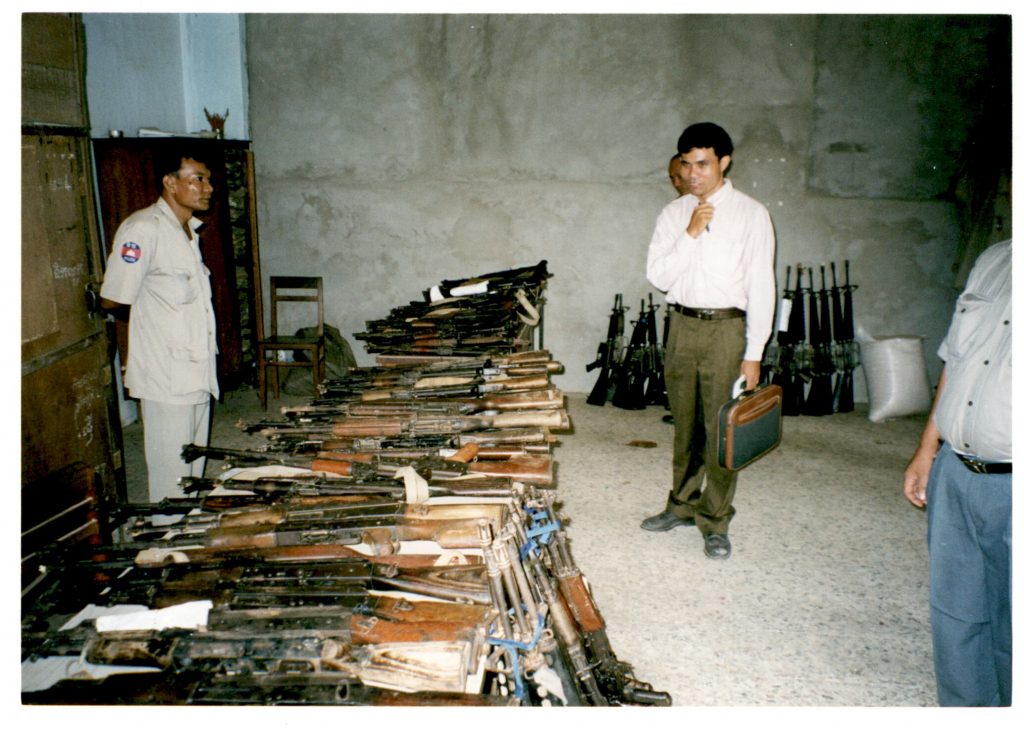
This working group transitioned into a local NGO with a government mandate to peacefully collect and symbolically destroy weapons of war across Cambodia.
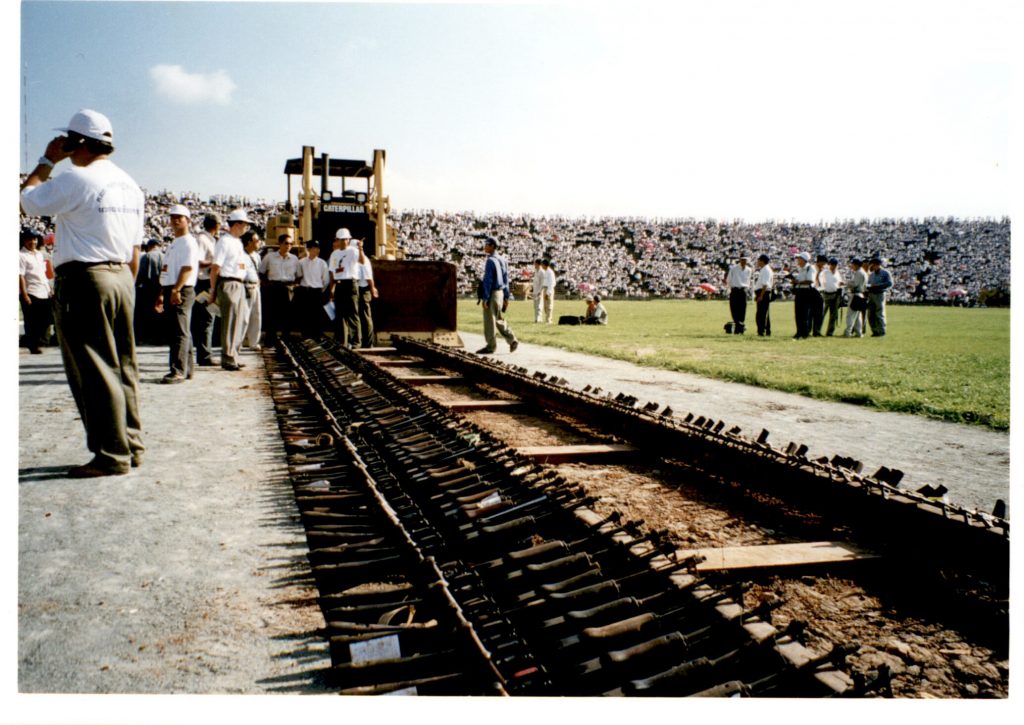
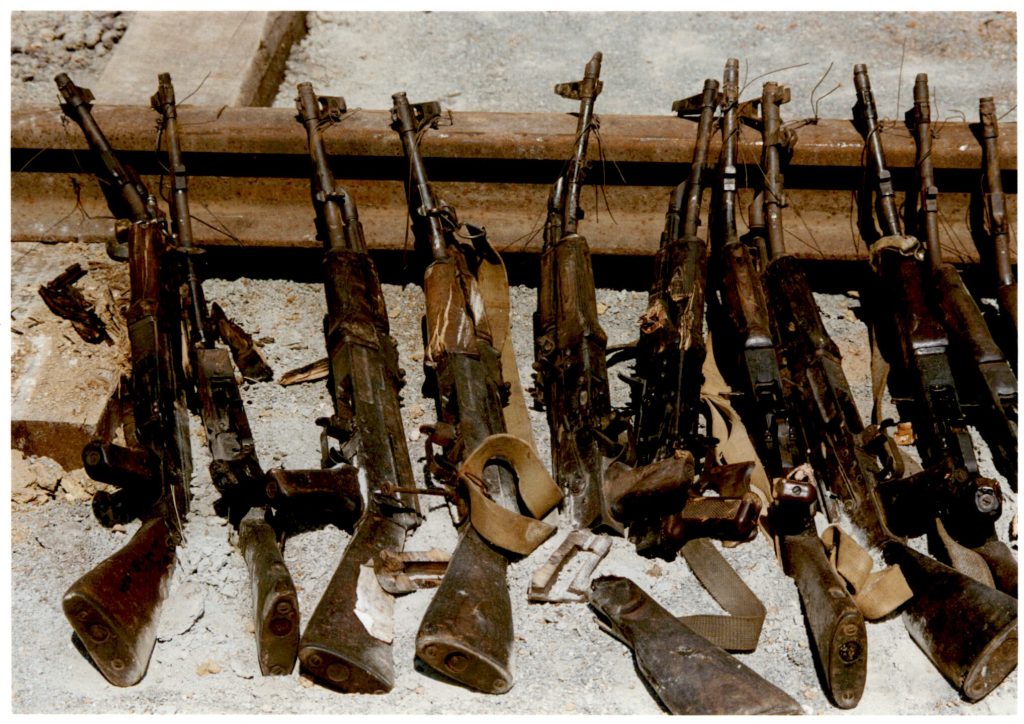
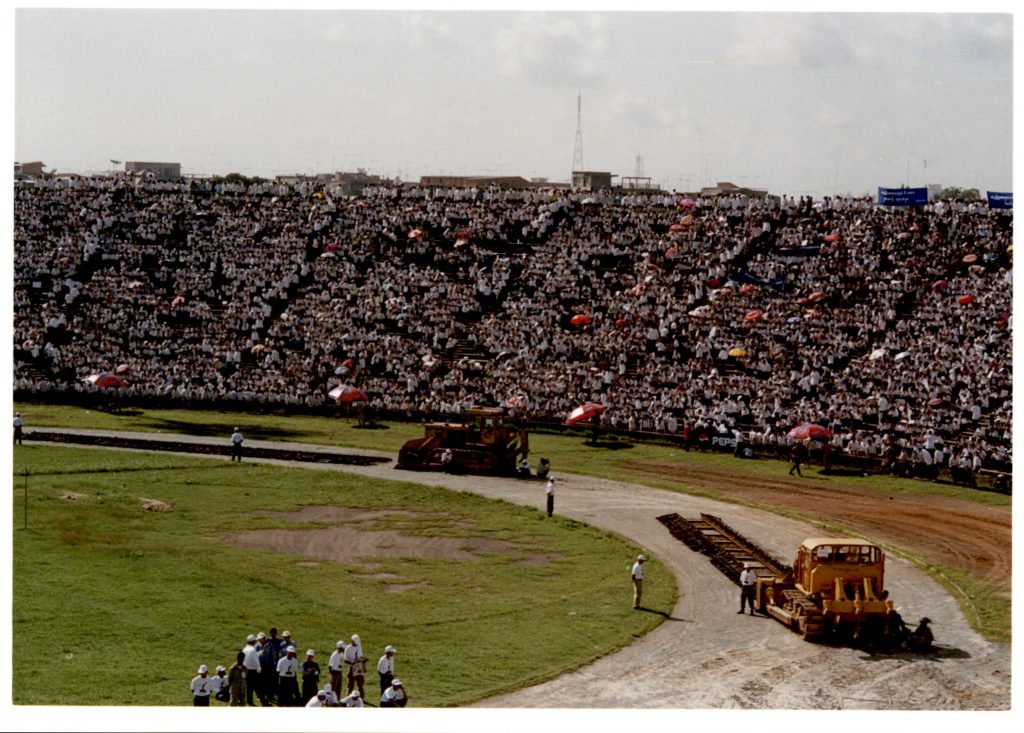
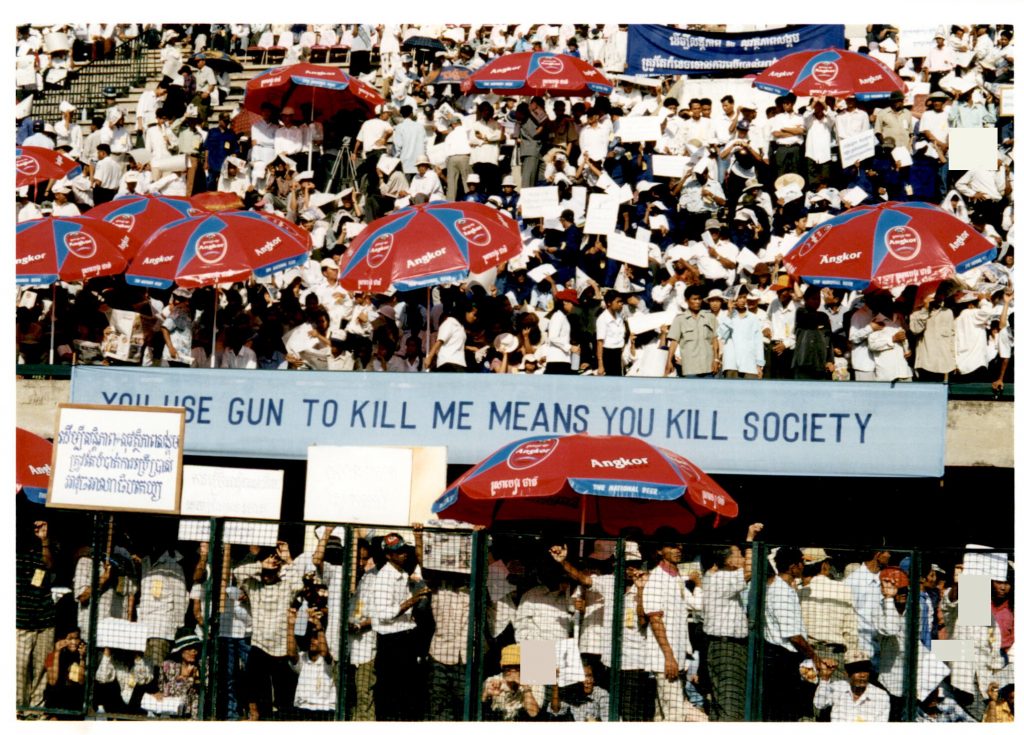
MCC and other NGOs supported the Working Group for Weapons Reduction in organizing weapons buy-back programs and public ceremonies destroying weapons.
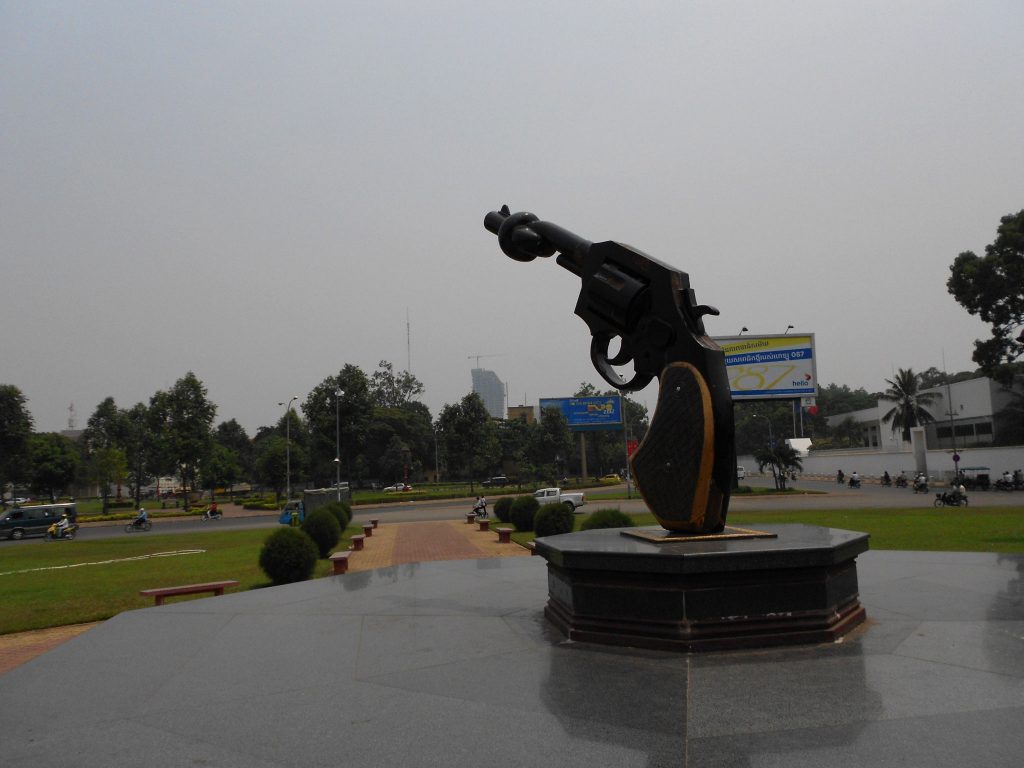
Some of the destroyed weapons were repurposed into peace art including Phnom Penh’s Tied Gun Monument.
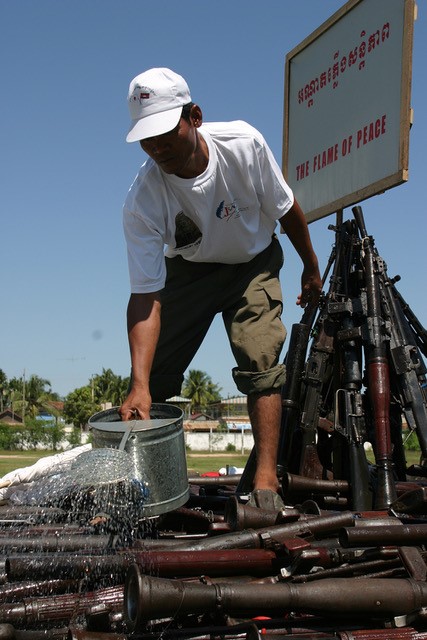
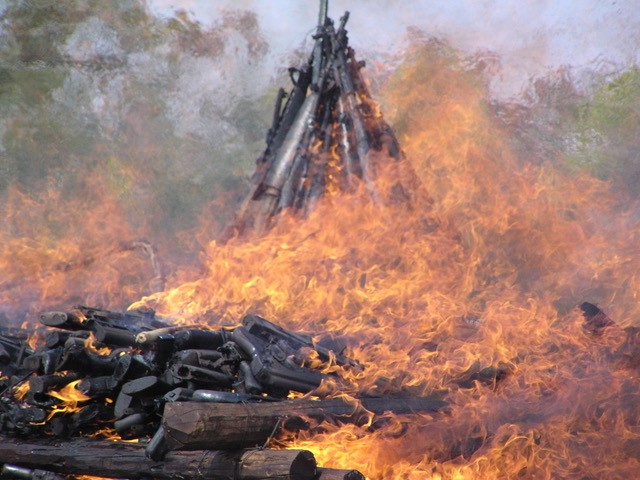
The United States today and Cambodia in the 1990s are very different contexts. As seen in some of the photos above, there were celebrations in Cambodia for the destruction of these weapons and it was seen not as the restriction of a right but as the restoration of public safety. The United States is the lead weapons manufacturer in the world while Cambodia has no weapons manufacturing sector. The weapons being destroyed in Cambodia were all made in other countries. In Cambodian law and culture, there is no history of the ‘right to bear arms’.
But Cambodia’s experience demonstrates that, if the public supports it, that a society can peacefully and successfully go from an abundance of weapons to a society where a single person firing a gun in the air at night is newsworthy in just a couple of decades.
Thanks Charles
It is a different world. More stress. More mental illness. More violence. I never feared my fellow classmates. I never knew what a ‘lock down’ drill was. I appreciate your reflection.
Excellent reflections, Charles, thanks! I’m wondering if there are other cultural differences that gives rise to these two different responses to guns: in the US we are driven by individualism and looking out for only ourselves and in many other countries like Cambodia, there is a greater collective identity and what is good for our neighbors…. Blessings as you ponder and serve, and plant seeds of peace and hope!